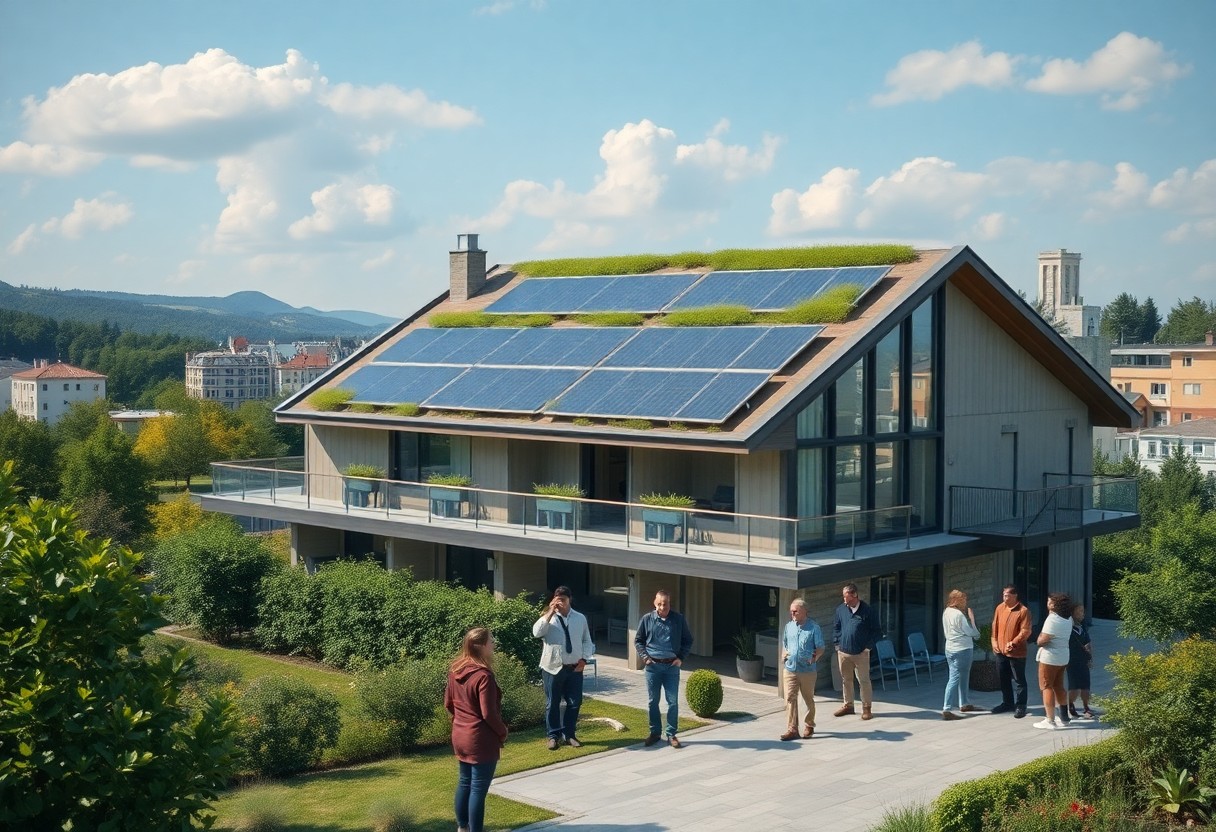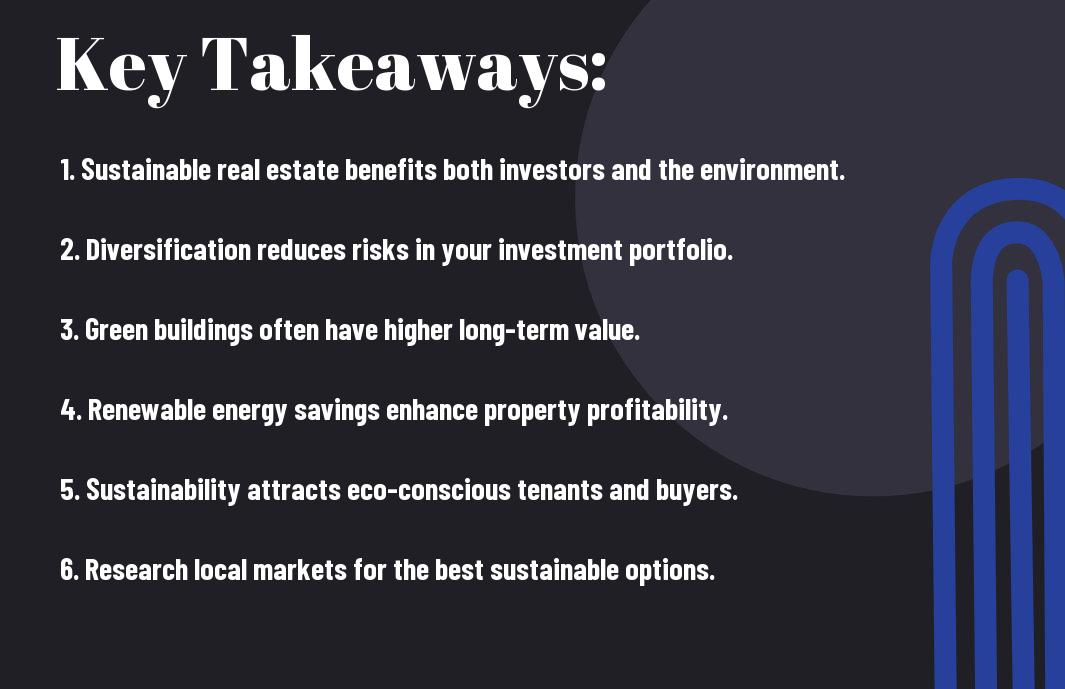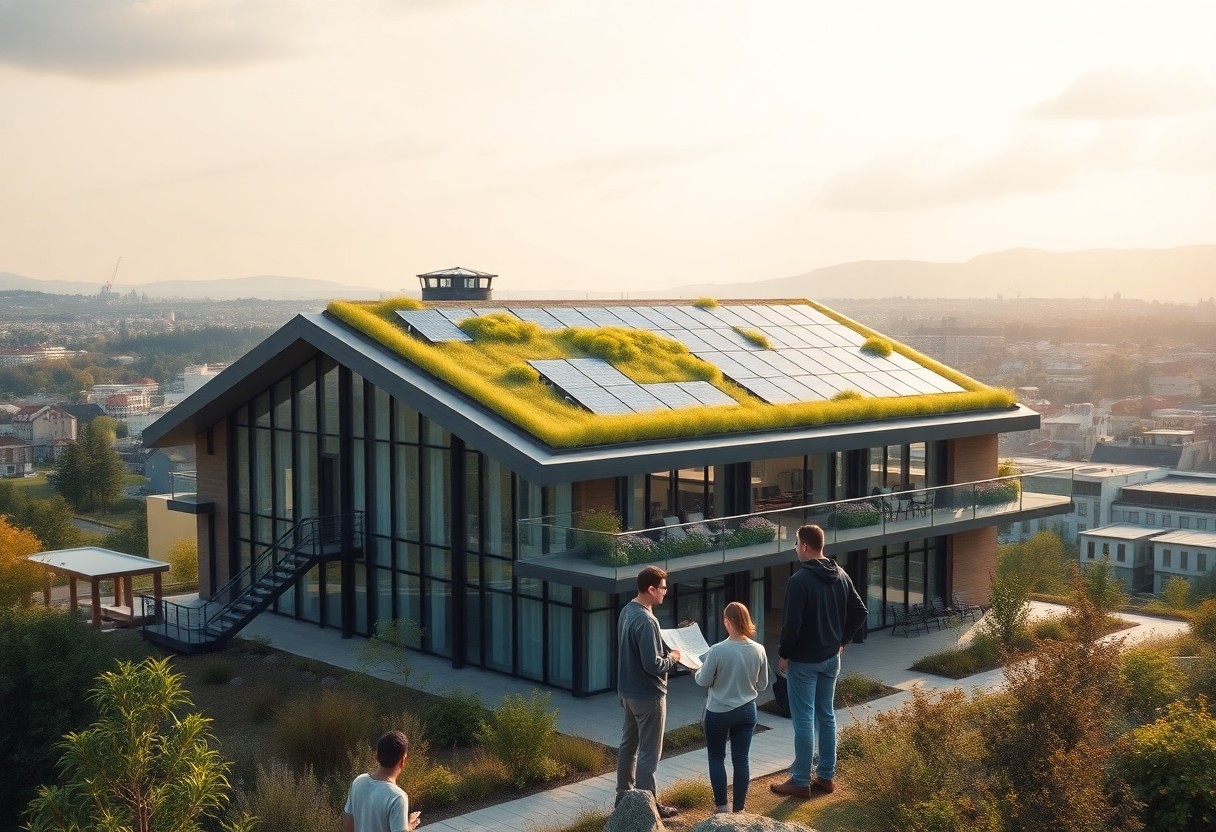Many investors are recognizing the benefits of diversifying their portfolios with sustainable real estate investments. This approach not only helps you reduce risk but also aligns your financial goals with environmental responsibility. By choosing properties that focus on energy efficiency and sustainable practices, you can contribute to a healthier planet while securing long-term financial returns. In this post, you will discover how sustainable real estate can enhance your investment strategy and provide positive impacts for your future.

Key Takeaways:
- Diversifying your portfolio with sustainable real estate can reduce risk and enhance returns. Sustainable properties often perform better in the long term due to their energy efficiency and lower operating costs.
- Investing in sustainable real estate contributes to environmental protection. Properties designed with eco-friendly features help reduce carbon footprints and promote a healthier planet.
- Stay informed about trends in sustainable investing. Knowledge about green building certifications and market demand for eco-friendly properties can guide your investment decisions effectively.

Understanding Sustainable Real Estate
The concept of sustainable real estate focuses on creating and managing properties in ways that are environmentally friendly, socially responsible, and economically viable. This type of investment aims to minimize negative impacts on the environment while promoting long-term benefits for both investors and communities. Sustainable real estate includes energy-efficient buildings, renewable energy sources, and materials that reduce waste. By choosing sustainable options, you can support a healthier planet and potentially increase your investment returns.
What is Sustainable Real Estate?
To put it simply, sustainable real estate refers to properties that are designed or modified to reduce their impact on the environment. This can involve using energy-efficient appliances, sustainable building materials, and eco-friendly landscaping. Sustainable real estate also considers the social aspects of property development, such as creating spaces that are accessible and beneficial for the community. By investing in these properties, you contribute to a more sustainable future while making a positive impact on your portfolio.
Benefits of Sustainable Real Estate Investments
Below are several benefits of investing in sustainable real estate. First, these properties often have lower operating costs due to energy-efficient features, which can lead to higher profits for you as an investor. Second, sustainable properties tend to attract more tenants who value eco-friendliness, resulting in lower vacancy rates. Third, many areas provide incentives for green building practices, such as tax breaks or grants. This can boost your overall returns. Additionally, as demand for sustainable living options continues to rise, your investment may appreciate more quickly.
The benefits of sustainable real estate investments extend beyond financial gains. You play a role in promoting environmental sustainability by supporting eco-friendly practices. Sustainable investments also tend to have a positive social impact, creating healthier living spaces for communities. As more consumers recognize the importance of sustainability, properties with green features are likely to become more valuable. This not only helps the environment but also enhances your reputation as a responsible investor.
Key Factors for Diversification
One way to build a strong investment strategy is through diversification in sustainable real estate. Here are some key factors to consider:
- Choose various types of properties, like residential and commercial.
- Invest in different locations with growth potential.
- Consider various sustainable practices to enhance property value.
This approach helps spread risk and can lead to more stable returns.
Identifying Investment Opportunities
Factors to consider when looking for investment opportunities include market trends, community needs, and property locations. Research neighborhoods with strong sustainability initiatives. Look for areas where eco-friendly developments are becoming popular. These investments can attract a niche market and can provide a strong return.
Balancing Risk and Reward
Identifying the right balance between risk and reward is imperative for your investments. Sustainable real estate can vary in risk levels. Higher-risk properties may offer larger rewards but could also lead to more significant losses.
Understanding this balance means you need to assess how much risk you are willing to take. Diversifying across different types of sustainable properties can help minimize risks while maximizing potential rewards. For instance, investing in a mix of established, income-generating properties and new, innovative projects can create a buffer against market fluctuations. This strategy allows you to make informed decisions that align with your investment goals.

Types of Sustainable Real Estate Investments
After understanding the importance of sustainable practices, it’s necessary to explore the different types of sustainable real estate investments. These investments are designed to be eco-friendly and socially responsible. Here are some main types:
- Green residential properties
- Energy-efficient commercial buildings
- Mixed-use developments
- Affordable housing initiatives
- Renewable energy projects
Assume that you want to invest wisely while supporting the environment.
| Type | Description |
| Green Residential Properties | Homes designed for energy efficiency and reduced environmental impact. |
| Energy-Efficient Commercial Buildings | Structures that minimize energy use through advanced technologies. |
| Mixed-Use Developments | Places where residential, commercial, and community spaces coexist. |
| Affordable Housing Initiatives | Projects that provide sustainable housing at lower costs. |
| Renewable Energy Projects | Investments in solar, wind, or other sustainable energy sources. |
Residential Properties
An excellent option for sustainable investing is green residential properties. These homes often include features like solar panels, energy-efficient appliances, and sustainable building materials. They not only help the environment but can also lower your utility bills. This makes them a smart choice for both your wallet and the planet.
Commercial Properties
Below are the commercial properties that focus on sustainability. These buildings prioritize energy efficiency and are designed to reduce their overall carbon footprint. Factors like location, design, and operational efficiency play vital roles in these investments, offering both economic and environmental benefits.
In addition, sustainable commercial properties often attract environmentally-conscious tenants and businesses. Many large companies seek buildings that align with their sustainability goals. This means that investing in such properties can lead to higher demand and stable rental income. Making a wise investment in this area can also enhance your portfolio over time, benefiting your finances while supporting the environment.
Key Takeaways
- Explore diverse sustainable investment options
- Focus on residential and commercial properties for steady returns
- Make investments in environmentally-friendly materials and practices
- Consider mixed-use developments for added value
- Stay informed about trends in renewable energy projects
Financing Sustainable Real Estate Projects
To effectively finance sustainable real estate projects, you should explore various options that support eco-friendly investments. One way is to learn about strategies that can enhance your portfolio. Check out this helpful resource on How to Build a Diverse Property Investment Portfolio in 2024. Understanding your financing options can significantly contribute to your success in sustainable real estate.
Green Mortgages and Loans
Between traditional mortgages and green mortgages, you can find better financing options for sustainable projects. Green mortgages typically offer lower interest rates and better terms if you invest in energy-efficient properties. These loans encourage you to create environmentally friendly spaces while making a solid investment.
Grants and Incentives
Projects that focus on sustainability often qualify for various grants and incentives. These financial aids can significantly reduce your initial costs, making it easier to kickstart your sustainable investments. You may find programs from local, state, and federal governments designed to support green initiatives.
In addition, many non-profit organizations and private companies offer incentives for energy-efficient upgrades or sustainable building practices. This could include tax credits or cash rebates for installing solar panels or using sustainable materials. By taking advantage of these opportunities, you can lower your costs and increase the overall value of your investment.
Challenges in Sustainable Real Estate Investment
Once again, venturing into sustainable real estate investments presents unique challenges. These can affect your returns and overall experience. As you explore various options, it’s important to understand the potential obstacles you’ll face. For a deeper look into this subject, you can refer to The Ultimate Guide To Sustainable Real Estate Investing.
Market Fluctuations
Against the backdrop of changing market conditions, sustainable real estate investments can be particularly sensitive. For example, shifts in local or global economies can impact property values and rental demand, affecting your investment’s performance.
Regulatory Hurdles
On your journey in sustainable real estate, you will encounter various regulatory hurdles. These regulations can vary widely by location and may include zoning laws, building codes, and environmental assessments that impact your investment decisions.
Hence, understanding the local regulations and compliance requirements is necessary. Failing to navigate these rules could lead to delays, added costs, or even legal issues. It’s wise to consult with local experts or legal advisors who specialize in sustainable real estate. This way, you can ensure your investments align with the laws and reduce potential risks.

Success Stories in Sustainable Real Estate
Unlike traditional investments, sustainable real estate has shown remarkable success in various markets. Investors are increasingly drawn to properties that not only generate income but also promote environmental health. This trend highlights how sustainable practices can lead to profitable ventures while benefiting the community and the planet.
Case Studies of Profitable Investments
Studies reveal that sustainable real estate can yield impressive results. Here are some case studies that illustrate this trend:
- The Bullitt Center (Seattle, WA): Generated a 6% return on investment annually since 2013 by using energy-efficient technologies.
- Edinburgh’s BREEAM Buildings (UK): Achieved rental growth rates of 23% over five years, thanks to sustainable design.
- 69 M Street (Washington, D.C.): Experienced an occupancy rate of 98%, higher than the city average, due to its LEED certification.
- Green Town (Cohousing Community, MA): Sold homes at a premium price, averaging $150,000 more due to eco-friendly features.
Lessons Learned from Successful Investors
Estate investing in sustainable properties teaches valuable lessons. Many investors find that combining profitability with sustainability not only attracts tenants but also enhances property value over time. Successful investors focus on eco-friendly upgrades that lead to long-lasting savings and appeal.
Consequently, investing in sustainable real estate can be a smart decision for your portfolio. By studying the success of these projects, you can better understand how to make sustainable choices that still prioritize financial gain. Being informed helps you feel confident when making investment decisions that align with your values and financial goals.
To wrap up
Hence, diversifying your portfolio with sustainable real estate investments can provide both financial rewards and environmental benefits. By choosing properties that focus on energy efficiency and sustainability, you can reduce your risks while contributing positively to the planet. Consider researching green building certifications and exploring eco-friendly developments in your area. This approach not only supports eco-conscious practices but also attracts a growing market of buyers and renters seeking sustainable options. Start taking steps today to incorporate sustainable real estate into your investment strategy for a better tomorrow.
FAQ About Diversifying with Sustainable Real Estate Investments
Q: What are sustainable real estate investments?
A: Sustainable real estate investments focus on properties designed to be environmentally friendly. This means they use less energy, reduce waste, and often include features like solar panels or energy-efficient appliances. The goal is to create buildings that are better for the planet while still providing a good return on investment.
Q: Why should I diversify my real estate portfolio with sustainable properties?
A: Diversifying your portfolio with sustainable properties can help reduce risk. Sustainable investments often attract eco-conscious buyers and renters. Additionally, they can offer potential cost savings through lower utility bills and maintenance costs. This can lead to more stable income and higher property values over time.
Q: How do I find sustainable real estate investments?
A: You can start by looking for properties that have green certifications, such as LEED (Leadership in Energy and Environmental Design). Real estate agents who specialize in eco-friendly properties can also provide leads. Online platforms that focus on sustainable developments or eco-friendly home listings can be useful. Additionally, networking with investors in this niche can yield valuable opportunities.
Q: What are the financial benefits of investing in sustainable real estate?
A: Investing in sustainable real estate can lead to various financial benefits. First, these properties often have lower operating costs due to energy efficiency. Second, many governments offer tax incentives for green buildings. Lastly, sustainable properties may sell at a premium price because of their eco-friendly appeal, resulting in higher returns on investment.
Q: Are there risks associated with sustainable real estate investments?
A: While there are opportunities, there are also some risks. The market for sustainable real estate is still developing, and demand can vary. Additionally, the upfront costs for green upgrades may be high. It’s important to do thorough research and work with experts who understand the sustainable real estate market to help mitigate these risks.
### Key Takeaways
– Sustainable real estate investments focus on environmentally friendly properties.
– Diversifying with these investments can reduce risk and provide better return potential.
– Look for properties with green certifications and connect with specialized real estate agents.
– Financial benefits include lower operating costs and potential tax incentives.
– Be aware of the unique risks and seek expert advice when investing in this area.




